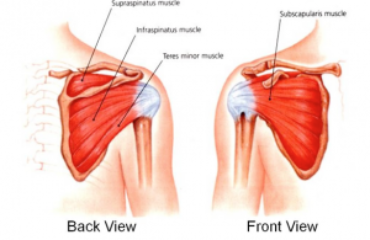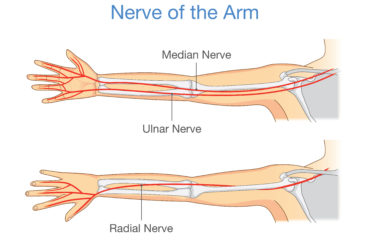 “Weightlifter’s shoulder” is the layman term given to a condition known as distal clavicular osteolysis where high stresses placed on the acromioclavicular joint (where the clavicle/collarbone meets the acromion of the shoulder blade) causes pathology to occur here.
“Weightlifter’s shoulder” is the layman term given to a condition known as distal clavicular osteolysis where high stresses placed on the acromioclavicular joint (where the clavicle/collarbone meets the acromion of the shoulder blade) causes pathology to occur here.
The findings made on ultrasound investigation of the affected acromioclavicular joint include:
- Bone resorption (absorption back into cells) at the site of the distal clavicle that looks like irregular cortical erosions.
- There’s no abnormality of the acromion and it remains intact.
- Soft-tissue swelling around the joint.
- A distended joint capsule.
- Joint instability.
The signs and symptoms of an individual suffering from distal clavicular osteolysis include:
- A dull ache and tenderness over the acromioclavicular joint.
- Increased pain in the mentioned area when performing physical activities.
- In weightlifters, the pain is experienced the most when they perform bench-presses or other similar activities.
- Pain experienced on examination of the patient when performing the cross-chest maneuver.
- There is no joint instability on physical examination with normal shoulder range-of-movement, but there may be crepitus heard.
Causes
The precise cause of distal clavicular osteolysis is not known, but the following theories have been suggested by researchers investigating this condition:
- The condition has an autonomic neurovascular origin where it is proposed that autonomic nervous system dysfunction results in reduced blood flow to the acromioclavicular joint leading to bone resorption.
- Synovial tissue invasion of the subchondral bone leads to the disease.
- Microfractures in the subchondral bone were found in 50 percent of participants in one study suggesting that repetitive microtrauma directed onto the acromioclavicular joint was responsible for the subchondral stress fractures and remodeling of the bone as seen on ultrasound imaging.
The last of these theories is the most widely accepted one currently regarding the development of distal clavicular osteolysis.
Management
Conservative management of distal clavicular osteolysis includes limiting physical activities that bring about pain and worsen the condition, using oral medications such as the anti-inflammatories, and physical therapy to help strengthen the muscles around the joint to help improve support and stability to reduce pain.
If these therapies don’t work, then intra-articular injections in the joint with steroid and local anesthetic agents are recommended.
Surgical intervention though may be needed in those where the mentioned treatment options are ineffective and in those patients who are unable to limit their physical activities. These surgeries include either open or arthroscopic resection (cutting out) of the distal part of the clavicle. The latter procedure is a minimally invasive one where small incisions are made on the skin and thin camera and surgical equipment are used.
In one literature review, it was demonstrated in seventeen studies that were performed to compare open versus arthroscopic distal clavicle resection surgeries that the latter procedure had a more than 90 percent success rate. These patients were able to return faster to work and to their sporting and physical activities. Patients who had less favorable outcomes were those who developed the condition as a result of trauma to the acromioclavicular joint.1
The long-term effects of both the open and arthroscopic surgeries were similar, but the latter is preferred due to the decreased risk of the patient picking up an infection with an open procedure.



